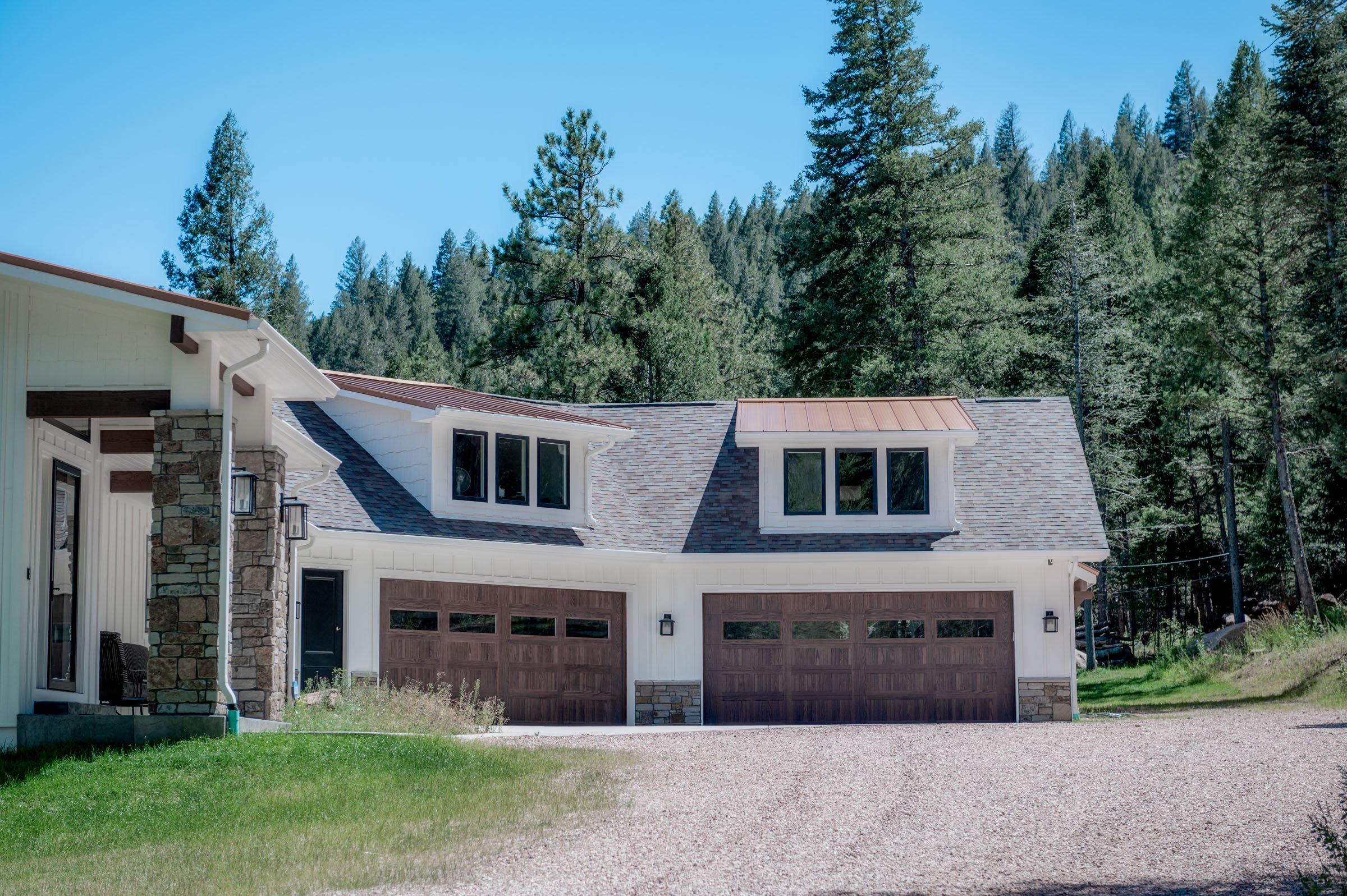HOW DOES FINANCING A CUSTOM HOME WORK IN COLORADO? | AN ELK RIDGE CUSTOM HOMES GUIDE
WHAT IS A CONSTRUCTION LOAN?
A construction loan is a short-term (12-18 months) loan that is used to cover the costs associated with building a new home. They are typically interest only and run 1%+ above the prime rate and the payments are progressive (you only pay interest on what is drawn to date so your first payment will be much smaller than your last payment). They also require a 20%-25% down payment which often times can be met with cash and/or equity in the land, money invested in construction drawings/planning fees, and sometimes even perceived equity above building costs from a “paper” appraisal. Depending on the type of loan you choose (construction-to-permanent, or construction-only), it will either convert to a permanent 15yr or 30yr loan once you acquire a certificate of occupancy, or it will need to be paid in full with another loan or cash.
These are considered by banks to be higher risk loan programs, due to the lack of collateral (i.e., no home to reposes/bank is stuck finishing the project, if defaulted on) so qualifying for a construction loan is a little trickier than a conventional mortgage. In addition to the sizable down payment, most banks require very good to excellent credit, low debt-to-income, a well-qualified builder, a full set of architectural plans, an actual-cost budget, and a fully executed build contract. NOTE: you can get pre-qualified without any of the planning process completed, which we highly recommend, so you can establish your budget and foresee any potential hurdles early in the process.
HOW DO CONSTRUCTION DRAWS AND LOAN PAYMENTS WORK?
Construction Draws: Over the course of the build, pay applications are submitted to the bank for materials and labor performed to date. There is typically a construction deposit (a flat fee or percentage of the project) that is paid to the builder at the initial funding of the construction loan to cover soft-cost items, trade deposits, long lead-time items, etc., which is typically credited on the final pay application. Some banks pay checks directly to sub-contractors and vendors and only pay the builder fee (overhead and profit) to the builder, while most banks release all funds to the builder for them to distribute to subs and vendors. Most builders submit pay applications once a month with all current invoices (including a portion of the overhead and profit for the builder) and once received, the bank sends an inspector to the project to verify that the level of completion matches the current draw amount. This, along with the homeowner’s approval, triggers a draw disbursement. NOTES: Many banks have a limit on the number of draw they allow throughout the project and charge fees if you go over the limit. All payments from a bank come with lien release requirements to protect the bank and owner. Because banks protect their interests above anything else, many will not release funds for any material that has not been installed in or on the home, regardless of invoicing for said materials. This is one of the reasons for the construction deposit since many products must be purchased long before they are installed.
Loan Payments: The owner is responsible for the monthly loan payments for the extent of the project, which are typically interest-only on the drawn-to-date amount (these payments are not funded from the construction loan). This means the payments will start small and grow as progress is made and the loan is drawn on. Once the construction is complete, the construction loan will either convert to a permanent loan, or need to be refinanced, or need to be purchased/paid in full by cash or by another mortgage company, depending on the way your loan was originally set up. NOTE: Many banks offer a one-time closing, construction-to-perm program that saves on closing costs and can lock rates prior to completing the project, which can be helpful.
HOW DOES FINANCING LAND WORK?
Most construction loans will include the cost of the land but because banks require a fully executed build contract to close on the construction loan, these two are typically out of sequence. Therefore, some banks offer “land loans” to bridge that gap. Land loans are also short term, higher interest, and require at least 20% down. The nice thing is that many construction loans will buy out the land loan at closing and many banks will apply the down payment and any equity from the land toward the down payment for the construction loan. If you are curious about current pricing on land in our area check out this article we wrote recently.
These answers below are specific to Elk Ridge Custom Homes:
HOW DOES THE DESIGN AND ESTIMATION PROCESS GET FUNDED?
Our design and estimation process, which includes a feasibility study and planning, architectural design, surveying, engineering, soils analysis, and bidding and estimating, costs somewhere in the $25K- $40K ballpark depending on the size and complexity of the project. These costs are broken up into 2-3 payments that we draw from our clients as progress is made and are considered a cash-out-of- pocket investment. Because this is an investment into the property/project, many banks will consider this investment as part of the down payment on the construction loan. NOTE: these expenses are part of every custom home and are included in the overall budget. We just like to break these out under a separate “Design and Estimation contract” in the beginning to safeguard our clients from being locked into a build contract without knowing what their home will look like, what it will have in it, and what it will cost. At the end of this process, you will have a full set of plans that is ready to be taken to the building department for permitting and have a very good idea of what the home will cost to build.
HOW DO CHANGE ORDERS WORK?
Many builders use change orders to seriously profit from their client’s adjustments to the plan, design, paint colors, etc. with large fees and insane markups. We, however, only use change orders to record changes in the scope-of-work and only charge a nominal fee for the associated administrative work. We reserve change orders for things like adding a deck where there wasn’t one or making an adjustment to the approved plans that requires going back through engineering and planning or changing a selection after it has already been bid on. Those changes are added to the budget (along with our normal overhead and profit) and assessed a small admin fee to cover our time working on it.
HOW DO BANKS' LOAN PROGRAMS DIFFER? AND WHICH ONES ARE THE BEST?
Just about every construction loan we have delt with has the same basic structure as outline above (interest only, progressive payments, etc.) with most of the differences in the conversion of the loan at the end and the way they disburse funds through the project. Most of our clients are going with one-time close, construction-to-permanent loans as they tend to be the best deal for them. Having worked with numerous banks, we can attest that some are way better to work with than others, both for our clients and for us. For the most part, the bigger the bank, the harder they are to work with. Small, local banks typically have the best customer service, the quickest response times, and can usually think outside of the box when creative solutions are needed. The banks that are super controlling with the funds disbursements tend to make the build process a little more difficult, but we understand the reasons for that control. If you would like a list of our favorite banks, please contact us and we will gladly share!

